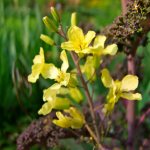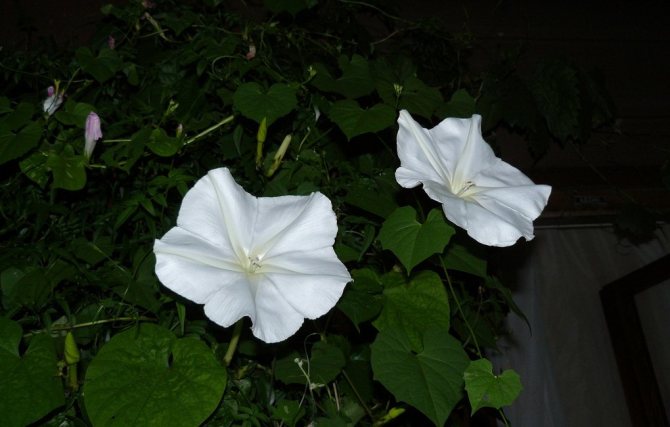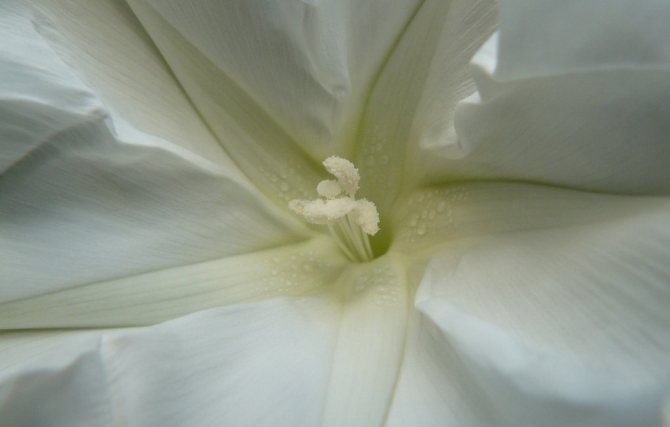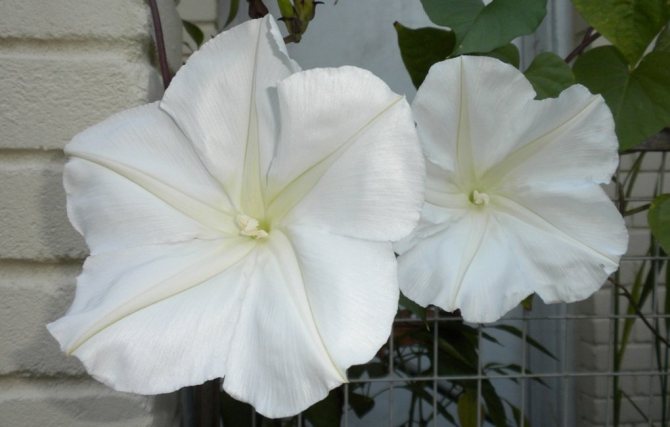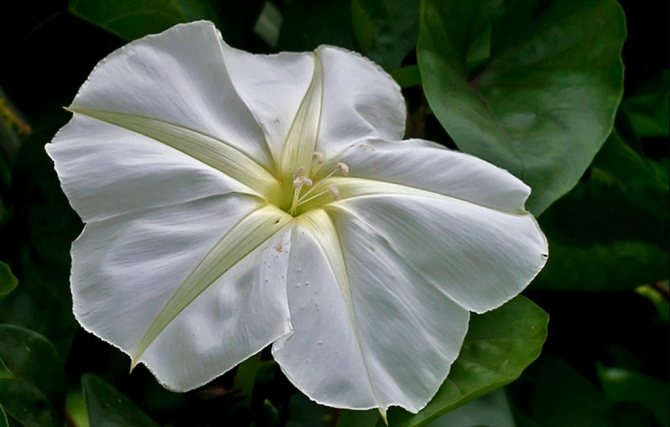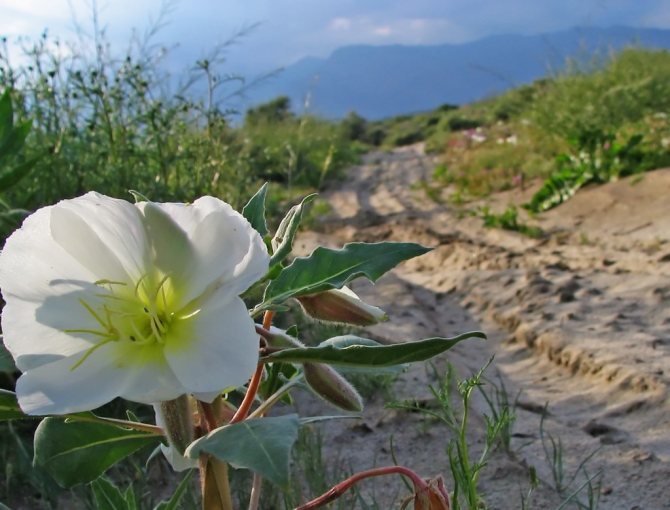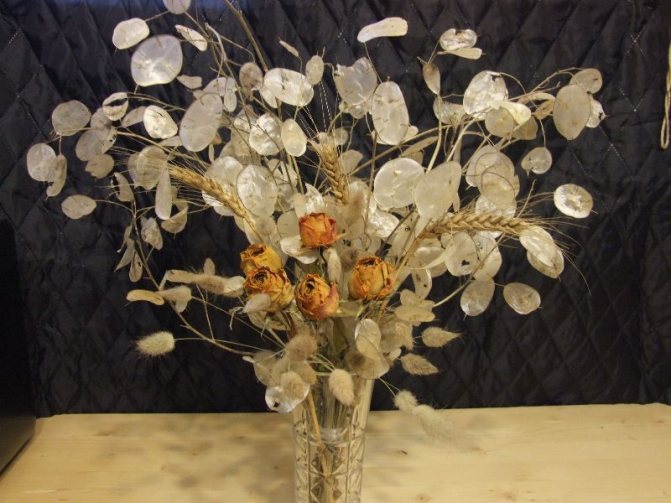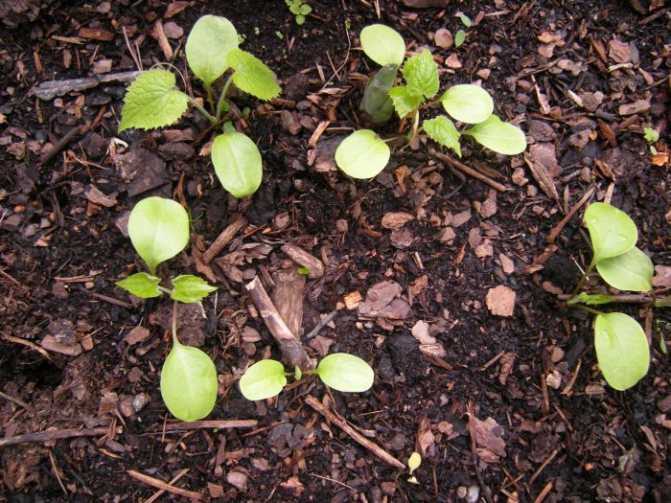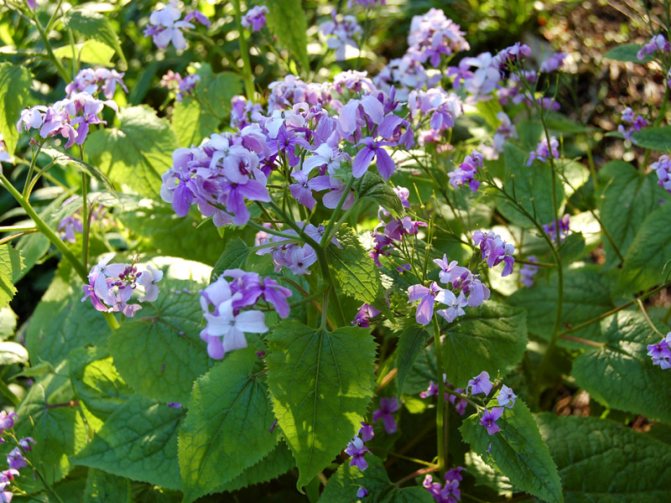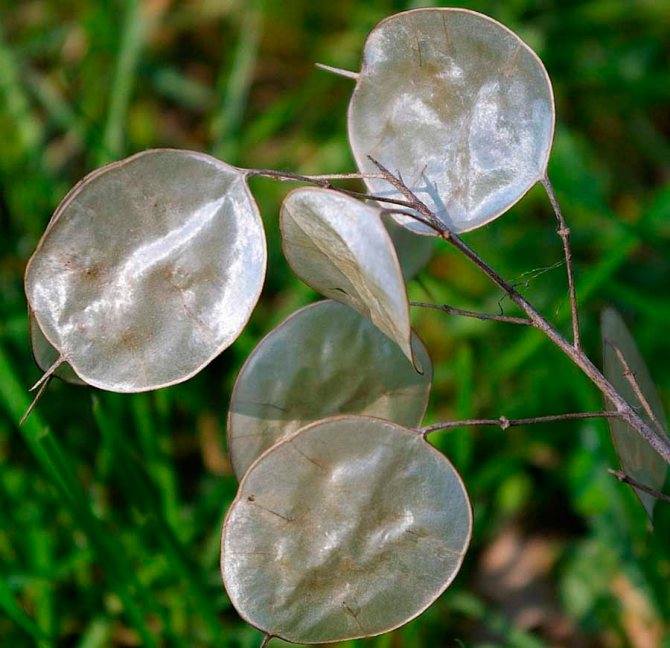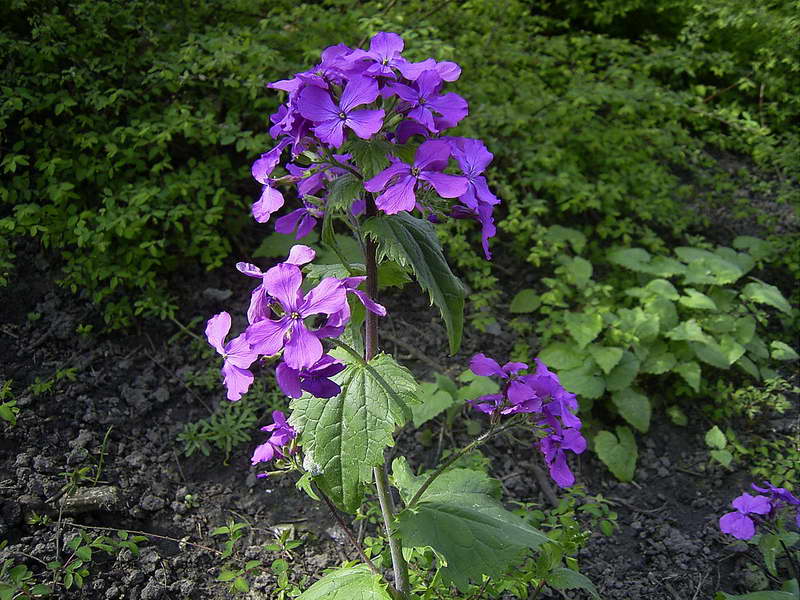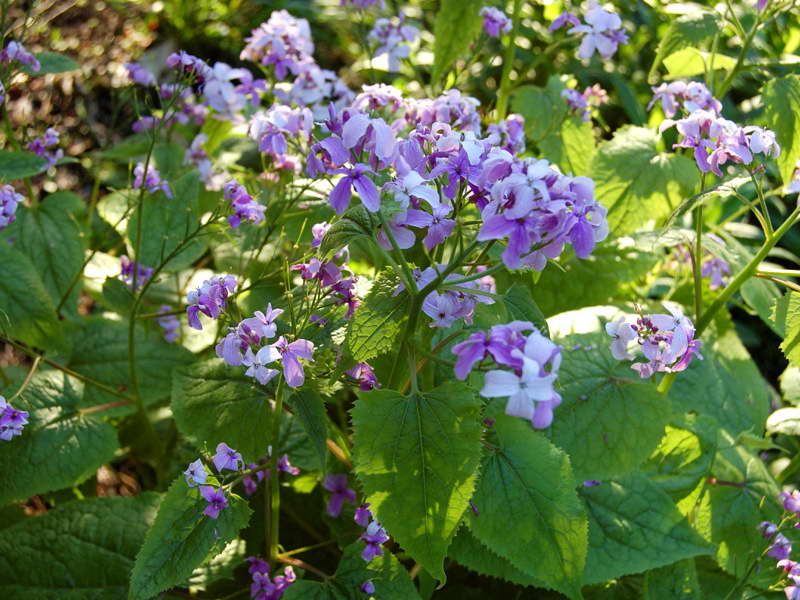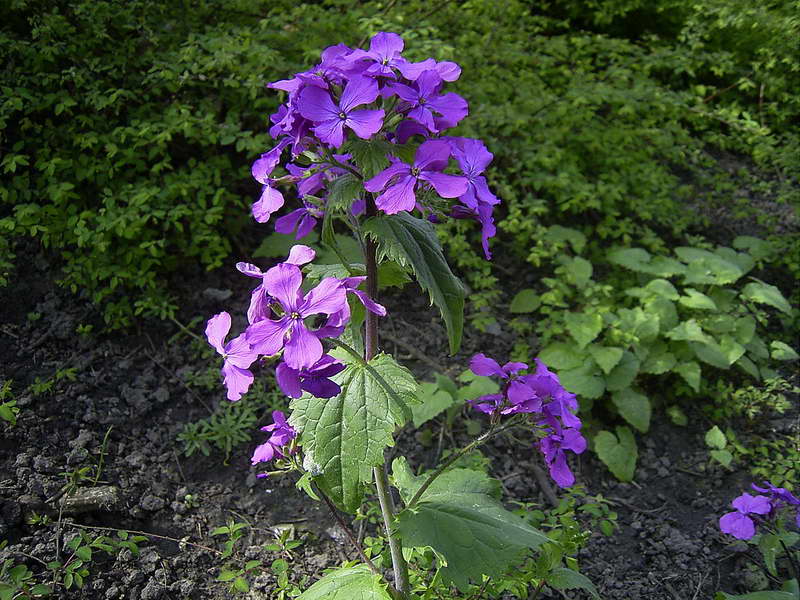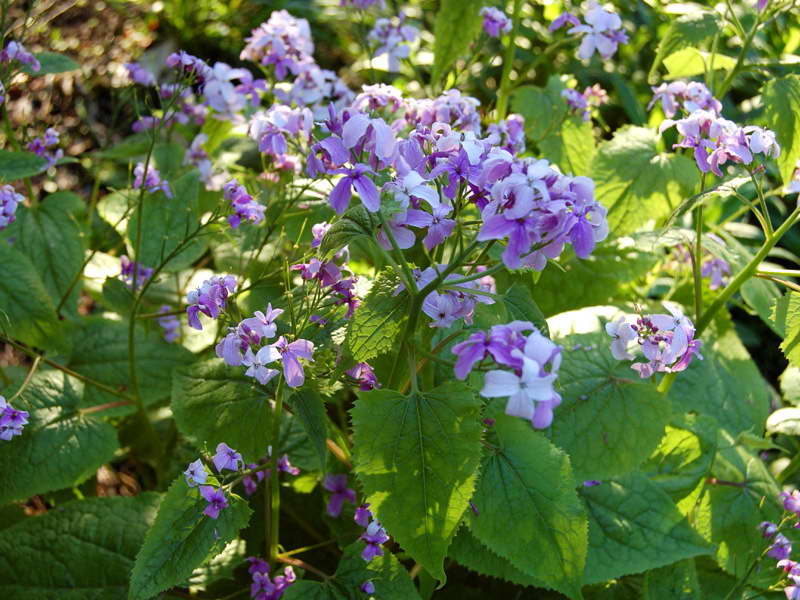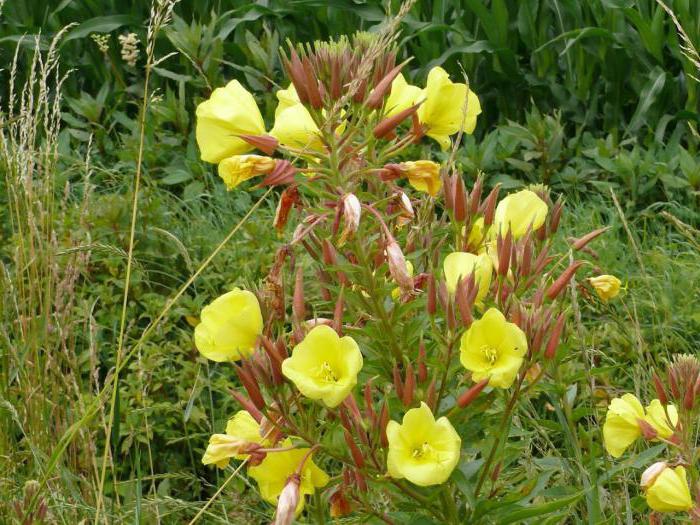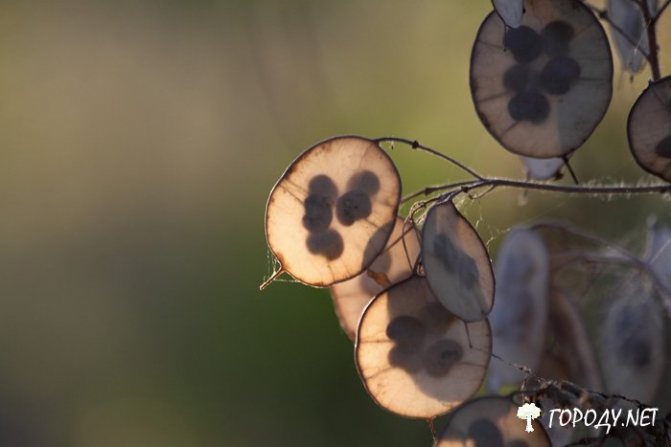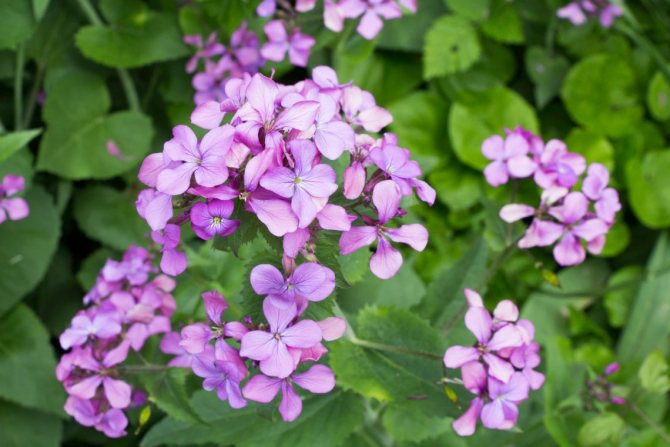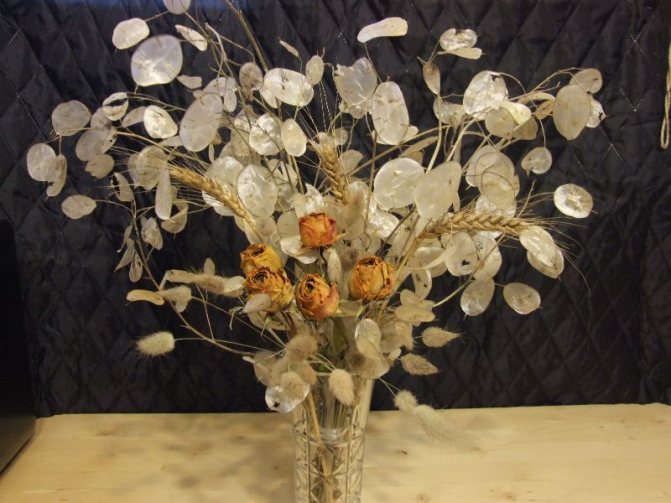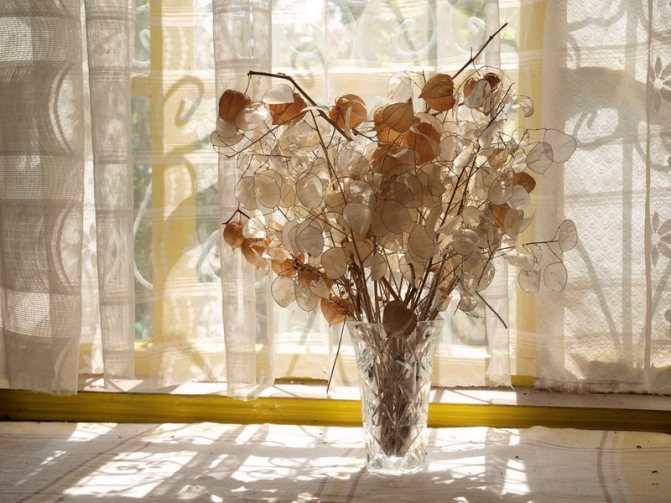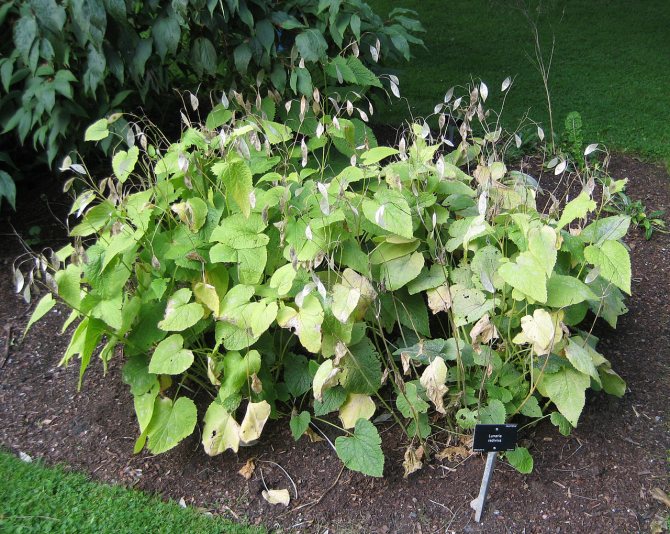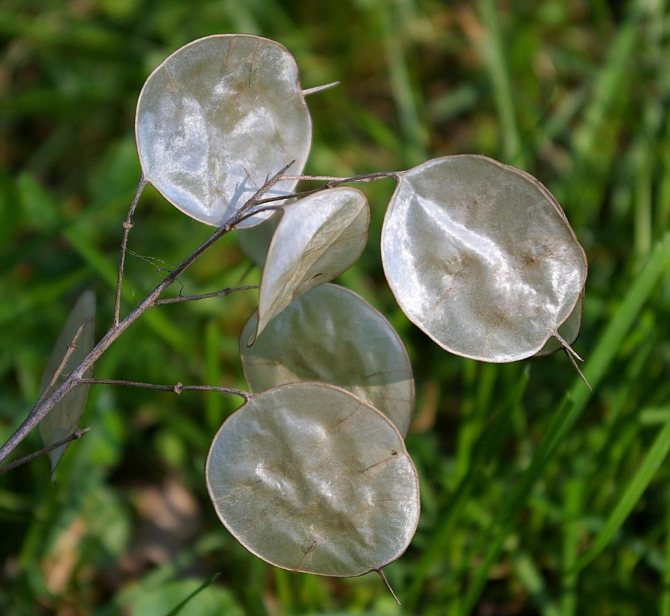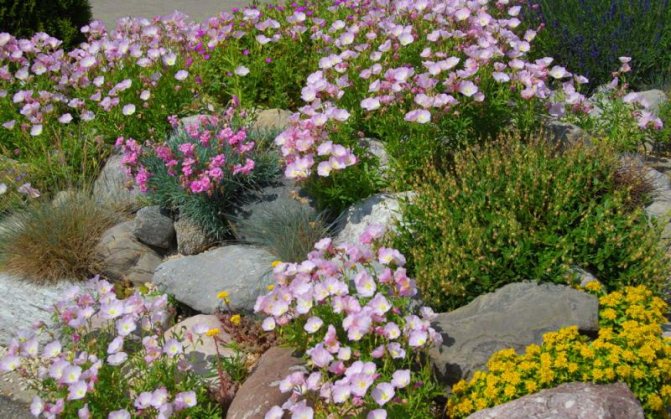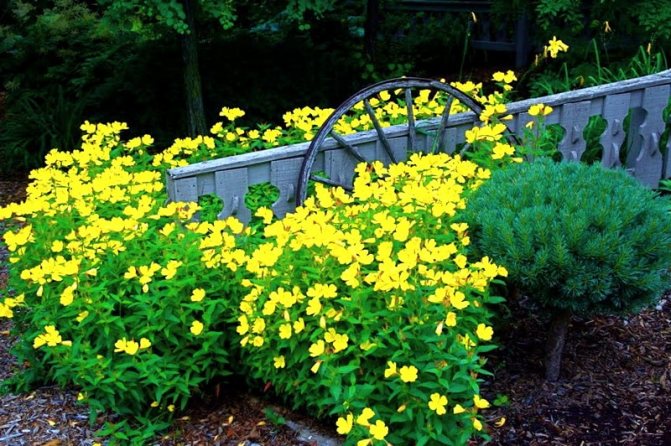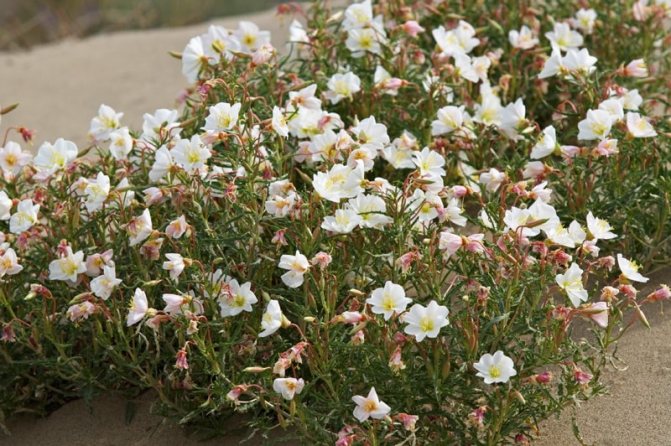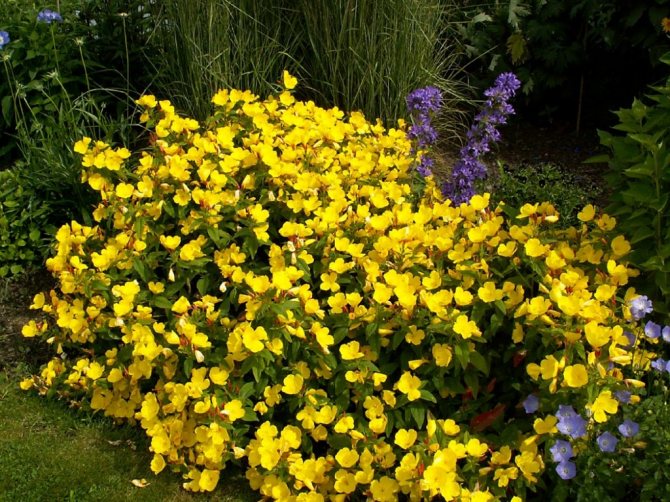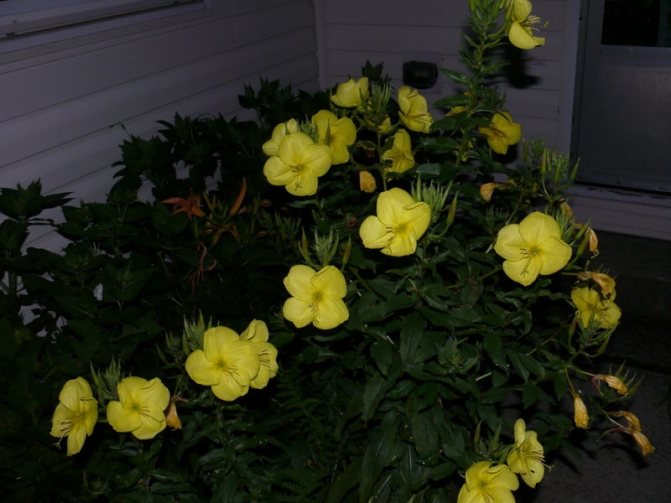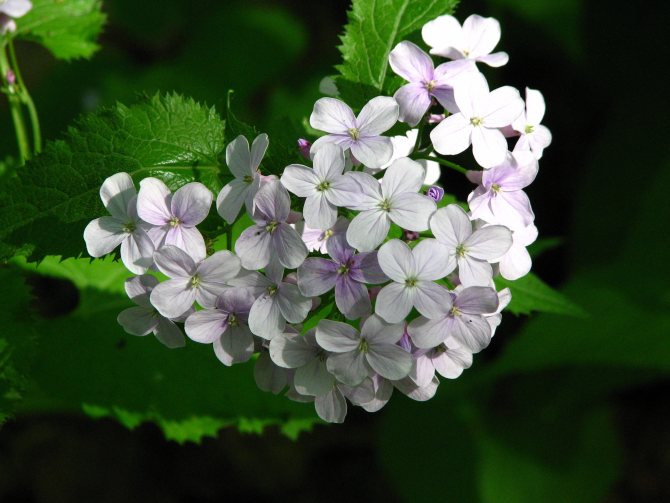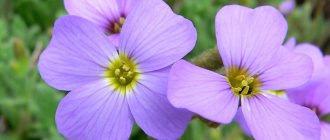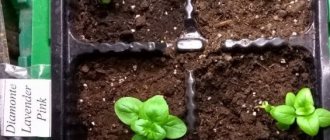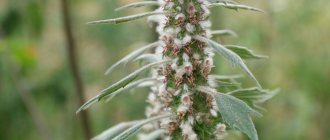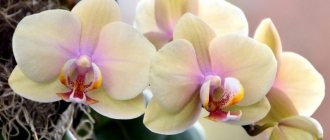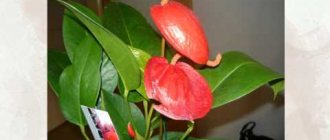Moonflower (Calonyction) is often found under the name Kaloniktion or Ipomoea moonflower, Ipomoea white. This plant belongs to the family Convolvulaceae or Birch. The territory of natural distribution covers the South American lands with a tropical climate and the southeastern regions of Asia. Although in natural nature the plants are represented by perennials, but in the middle latitudes (and in Russia) they are grown as annuals, since these representatives of the flora will not be able to winter here. This is due to the fact that when the temperature drops to 10 degrees Celsius, the flowers of the plant become smaller and smaller, and the stems are taken to turn brown and it is recommended to remove them.
It is believed that under the name moonflower, both varieties are combined: thorny moonflower (Calonyction aculeatum) and thorny moonflower (Calonyction muricatum).
| Family name | Bindweed |
| Growing period | Perennial, annual in the middle lane |
| Vegetation form | Herbaceous |
| Breeding method | Often vegetative, rarely seed |
| Landing period | Disembarkation only after return frosts have passed |
| Landing rules | The distance between plants is at least 20-25 cm |
| Priming | Sandy loam or loamy, light, nutritious and drained |
| Soil acidity values, pH | 6.5-7 - neutral |
| Lighting degree | Open sunny location or weak partial shade |
| Humidity parameters | Abundant and regular watering |
| Special care rules | It is necessary to provide support |
| Height values | 3-5 m, but some 8 m and more |
| Inflorescences or type of flowers | Single large flowers |
| Flower color | Snow-white or pinkish |
| Flowering period | From mid-summer to the first frost |
| Decorative time | From spring to frost |
| Application in landscape design | As a climbing or ampelous culture, for gardening posts, pergolas and gazebos |
| USDA zone | 4–9 |
The plant bears its name due to the fact that the flowers open at night, and therefore they associate it with the moon. In some English-speaking countries it is called "moonflower". Since the flowers have a white tint and this representative of the flora still comes from the genus Ipomoea, it bears the specific name - Ipomoea alba. The Latin name “calonyction” is also associated with night flowering and is based on the Greek words “kalos” and “nukti”, which translate as “good” and “night”, respectively. However, "kaloniktion" is an old term that denoted this genus of plants until recently and is often still found in the literature, today these species are classified as Ipomoea.
These two representatives of the moonflower have a high growth rate, while the shoots can reach 5-6 meters in length, and in some specimens these parameters are 8 or more meters. The color of the stems is green, over time, lignification occurs in the lower part, and then the shoots take on brownish shades. The stems differ in branching. Densely located large leaf plates unfold on the branches. In the upper part, the outlines of the leaves are three-lobed, and those that grow below are characterized by a heart-shaped shape. The foliage is so dense that it does not let rain and sun rays pass through.
Only after sunset, large buds begin to open on the stems, spreading a fragrant aroma around. This property gave the name to the plant, since by the morning dawn the flowers begin to wither. The notes of aroma of flowers are somewhat reminiscent of almond. The opening of the buds occurs with a barely audible cotton. On cloudy days, moonflower can be seen blooming in the daytime or if the plant is planted in a shady area. But the flowering process of kaloniktion attracted the attention of flower growers only in 1773. The color of the gramophone-like corolla of the plant is pure white or pinkish, and measures 15 cm in length with 7-10 cm at its widest part. Flowers begin to open in July and this process will stretch until frost.
In natural conditions, after the flowers are pollinated, the cone-shaped seed pods, filled with dark seeds, mature. However, when cultivated under our conditions, such seed material does not have time to ripen due to the fall in autumn temperature. Therefore, seeds are bought in flower shops for propagation.
The plant is unpretentious and, along with other varieties of morning glory, can also take its rightful place in the garden.
What a coin plant looks like
Not very high, up to a meter tall, the stem is surrounded by foliage. Leaves differ in shape from each other. Closer to the ground, they look like inverted hearts, higher they become like straight hearts. Between the lower and upper leaves and above, there are beautiful small four-leafed flowers that will later become fruit.
Lunar flowers are fragrant, they grow in inflorescences, their color is purple. Flowers appear mainly in the second year after planting, which is why one of the varieties is called biennial. But if you plant seedlings at home, then flowering can be obtained in the first year of life.
Yellow moon flower in the photo:
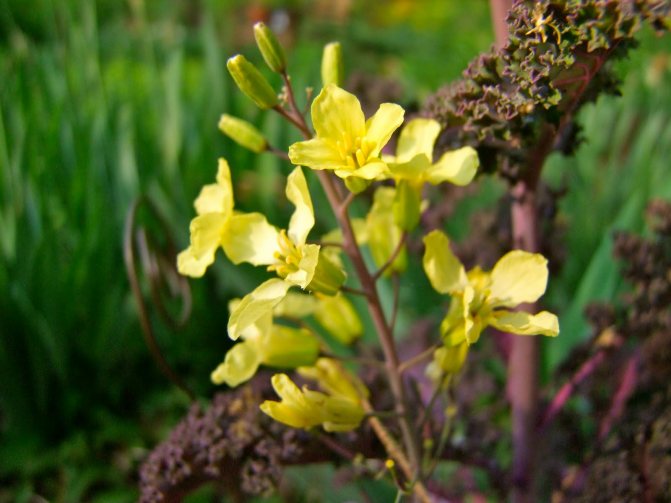
The fruit of the plant is a flattened ellipse, closer to the shape of a circle, especially in the annual variety. The average size is about 3-4 centimeters. The color of the fruit is silvery-transparent, which is what served for such an original name.
Lunaria Fruit:


Pest and disease control of moonflower in garden cultivation


The good news is that, like all types of morning glories, moon flowers are rarely attacked by pests and disease. But still, such troubles can happen when the rules of agricultural technology are violated. If the soil is constantly moistened from excessive watering or precipitation, in the wrong place, then moon flowers are inevitably affected by diseases of fungal etymology. Among them are usually distinguished: powdery mildew (also called linen or ashes), rot of various types, white edema and a large number of others. Such diseases are usually manifested by the appearance of spots or plaque of white, gray or brownish-rusty color on the leaf plates. As a result, the leaves begin to wither and soon fly around. As soon as these manifestations appear, the affected parts must be removed immediately, and the remaining ones must be treated with fungicidal agents, for example, Bordeaux liquid or Fundazol.
Important!
Any treatment should be carried out in those periods when there is no rain or wind, so that the product remains on the deciduous mass for a longer time.
If the disease is infectious, then it is unlikely to help the moonflower, so the entire vine will have to be removed. Usually, diseases associated with viruses and infections do not respond to treatment.
Of the pests that can harm kaloniktion, there are:
- Spider mite
, which can be seen by yellowed foliage and a translucent cobweb on the leaves and stems. If you do not pay enough attention, then all the stems and leaves will be braided with such a cobweb, after which the plant will die.The pest pierces the leaf plate and feeds on the sap. - Aphids
, whose population is multiplying rather quickly and can also cause irreparable harm. Aphids look like small bugs of greenish or black color. It is interesting that these pests secrete the so-called honeydew - plaque, which is the waste products of insects. The pad is sticky to the touch and over time becomes the cause of the appearance of another disease - a sooty fungus.
If, during regular inspection, the florist has identified such "uninvited guests", then you should quickly take measures to eliminate them. For this, treatment is carried out with insecticidal preparations, such as Fitoverm, Aktellik or Aktara.
Two different types of one flower
There are two types of Lunnik, planting and caring for them are different:
- Annual Lunnik... In our climate, it is rather a two-year-old flower. Since when planting in the ground in spring, the first flowering occurs only in the second year after planting. This is followed by fruiting and the life cycle ends. Beautiful round fruits with a silver tint remain as a keepsake. They are able to stand dry all winter, pleasing the eye in home compositions from dead wood.
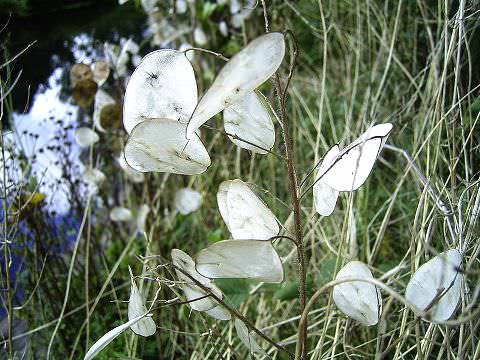

Lunaria dried flowers
- Perennial, or lunar reviving, requiring special conditions for location on the site, this view will delight you constantly. It is enough to properly prepare the soil once and plant it, so that in the future, only sometimes spending time on it, you can get a wonderful decoration of the garden.
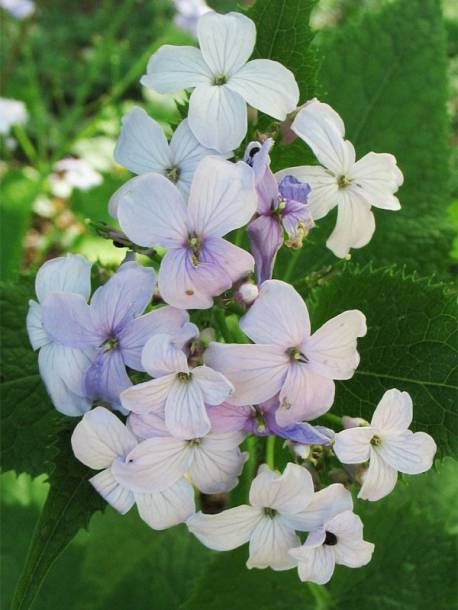

Lunaria flower
Botanical description of Lunaria
Lunaria is a genus of annual and perennial plants from the cruciferous family. Other names: moon grass, lunar, silver ruble, silversmith. Stems are slightly branched, erect, covered with fine hairs. The average height is 40-90 cm. The lower leaves are opposite, cordate, dentate, the upper leaves are alternate, broadly ovate, sessile.


Moon grass is distinguished by large, fragrant flowers of lilac, lilac, purple, sometimes white, shades. The silversmith blooms from mid-May to the second half of June in the second year after sowing. After that, oval-flattened pods with seeds grow in place of flowers. At first they are green, and over time they turn brown.
Inside the pods there is a translucent septum through which dark seeds are visible. This feature explains another name for the plant, which is found in English literature, "honesty" (Russian honesty, truthfulness). In addition, the British call it moneyflover or pennieflower, implying the external resemblance of a lunaria to a coin.
How Lunnik reproduce
This plant is cruciferous, and its reproduction on the site is produced by seeds or vegetatively. In summer, you can see the moths that have flocked to Lunnik, circling in their beautiful dance, pollinating the flowers.
Having received the fruits, the largest, brown seeds are selected, they are planted in the soil in spring, at a distance of 30-40 centimeters from each other. With a denser arrangement, the flowers will be smaller, the number of fruits will also decrease, and the general appearance will be spoiled.
Growing from seeds at home is quite simple and does not require special skills. And by planting seeds at the end of winter, you can get strong shoots at home, which will bloom in the first year of the plant's life. Unfortunately, this same year will be the last for him, if we are talking about a one-year option.
If you need to propagate a plant without waiting for its fruiting, just cut off a few shoots, place them in water until roots form, and then you can safely plant them in the ground.
A perennial plant reproduces, as a rule, by self-sowing.The main thing is to properly root and sow it in the right place, on pre-fertilized soil, and all that remains in terms of care is weeding and periodic fertilization.


Photo of a general view of the plant
Moonflower breeding tips
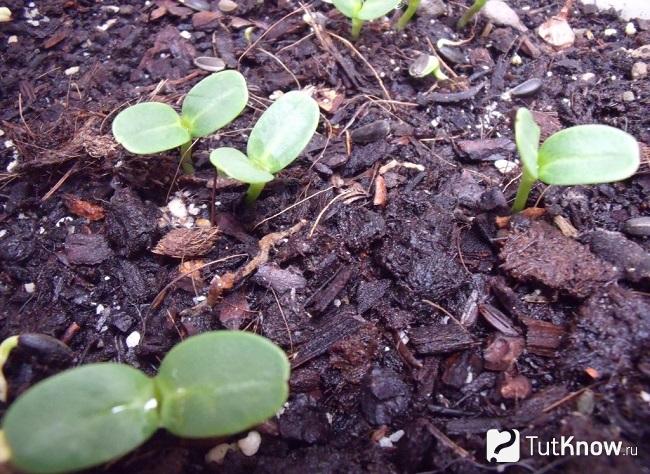

Although morning glory can be propagated both vegetatively and with the help of seeds, only the first method is often implemented with kaloniktion.
Reproduction of moonflower using seeds.
For our climatic zone, sowing moonflower seeds is recommended to be done early. Since the seedlings that were sown in February will bloom only in late summer or early autumn. Therefore, sowing is carried out in the middle of winter (early January). Before sowing, stratification can be carried out - holding the seed for a long time at low heat indicators. The seeds are placed on the bottom shelf of the refrigerator for a month.
For sowing, it is recommended to pre-scarify the seed (cut off the skin a little) and soak it for a day in a growth stimulation preparation (for example, in Epin or Zircon) diluted in warm water. When soaking, it is recommended not to violate the instructions on the package. If you can't get a growth stimulator, then ordinary aloe juice can act as such a remedy, which is diluted with water and seeds are placed in it. If the seeds have not lost their germination, then they will hatch in any case, only it will take more time without the aforementioned drugs. Seeds usually germinate in 1–2 weeks. You can wrap the seed with moistened cotton wool and then, when it sprouts, gently plant it in the ground.
After the seeds hatch, they are planted in seedling boxes with a peat-sand mixture or in separate cups (you can use peat ones, which will facilitate subsequent planting in open ground). At first, the growth of kaloniction will be very slow, but after a short time, the speed of pulling the stems will greatly increase. This indicator will directly depend on the ambient temperature and care.
With early sowing, for care, it will be necessary to carry out supplementary lighting with the help of phytolamps, and only when the daylight hours lengthen, it is removed. At the end of May, when the return frosts have passed, you can transplant the moonflower into the open ground. If sowing will be carried out directly into the soil in a flower bed, then this should be done during the period of April-May. But in any case, before sowing, you need to soak the seed for a day in warm water with a growth stimulator.
Reproduction of moonflower by layering.
In summer, a large amount of root growth appears on the kaloniction bush next to the root collar. A healthy shoot is chosen, which is thoroughly buried in soil so that its top is visible from under the soil. Care for the layer will be the same as for the parent instance. After 30–40 days, the cuttings take root, they are separated from the parent moonflower before frost and transplanted into pots in order to provide them with indoor care for the winter period. Or, you can cover the cuttings until spring with a layer of dry foliage if cultivation takes place in the southern regions. When the soil warms up thoroughly in the spring, the layers are carefully separated from the bush and transplanted into the prepared hole.
Propagation of moon flowers by cuttings.
With the arrival of spring, you can cut blanks from the branches of the bush and plant them in a shaded place for rooting. The length of the cutting should be at least 10 cm. The leaves in the lower part should be removed, and the lower cut should be treated with a root stimulation drug (for example, Kornevin or Heteroauxin) before planting. Cut plastic bottles are placed on top of the seedlings, and the soil is periodically ventilated and moistened when it dries. When new leaves begin to bloom on the handle, you can transplant to a pre-prepared permanent place of growth or for the winter in pots.
- See also breeding tips for morning glory
Care and features
The plant is unpretentious and does not require much effort in its maintenance. But it does have some peculiarities. The approach differs depending on the species:
- An annual plant is sown in medium-shaded or open areas, interspersed with other flowers and herbs, the living space of one Lunnik is of the order of a decimeter. Take this into account when sowing. Additional watering is usually not required;
- The perennial variant should be planted in shaded areas and make sure that the soil is moist, but not too much, otherwise rotting of the root system and the death of the plant may occur. Under natural conditions, this species chooses ravines and lowlands, growing along river banks in the shade of trees. Similar conditions must be created on the site; it must be planted in pre-fertilized soil.
Please note: both types of plants do not like heat, dryness and bright sunlight. Place them in shaded areas of the site, and in dry and hot times, additionally moisturize and watch the shade!
Lunaria (lunar) care
Everything is extremely simple: moderate watering with almost cessation by the time the fruits ripen, in especially hot times, pay special attention to soil moistening. Spraying doesn't like it. Feeding with organic matter 2 times a month, from the moment of vegetation to the beginning of fruiting. Shelter for the winter does not require because of its high frost-resistant properties.
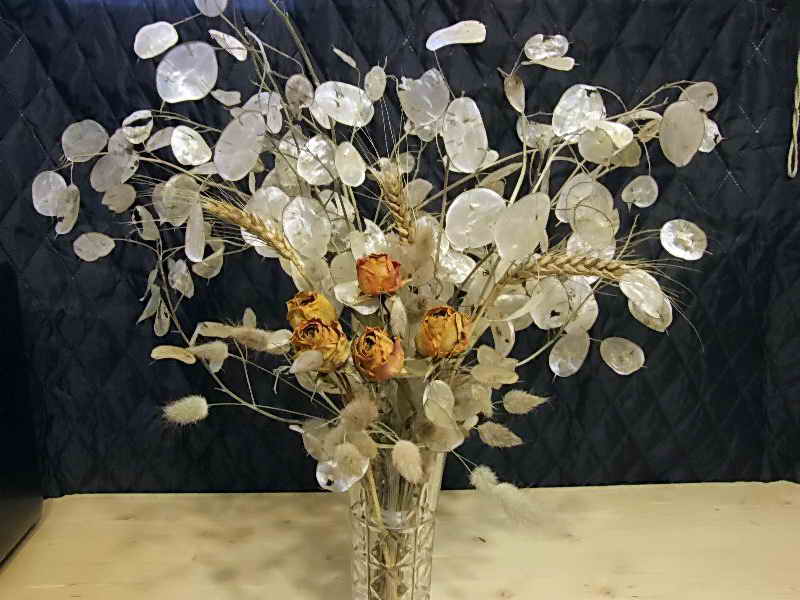

Transplanted in August, when the fruits are ripe and the stems dry out. Gives abundant self-seeding. Lunnik is afraid of the wind, so the plant is tied up for growing in the country. Its height can reach 30-70 cm, depending on the variety. After ripening, the branches with dried seed pods should be cut off and carefully peeled from the seeds. The resulting charm with shiny iridescent partitions will stay with you all winter.
LiveJournal
Location on the site
Lunnik is widely used today in landscape design, with its unpretentiousness and natural beauty, this flower deserves a place in the general range of other landscape plants. Here are the possible options for the location of Lunnik on the site:
- Such a plant looks best in a group arrangement, but do not forget that the distance between individual shoots during planting should not be less than 30 centimeters, otherwise the plant will be pale, there will be few flowers, and in general, the general appearance of such a planting will be depressing;
- It will look good on the so-called Moorish lawn, surrounded by grasses, such a lawn is not mowed and it forms a cushion of grasses and plants, pleasing the eyes of its owners.
Photos of flowers:
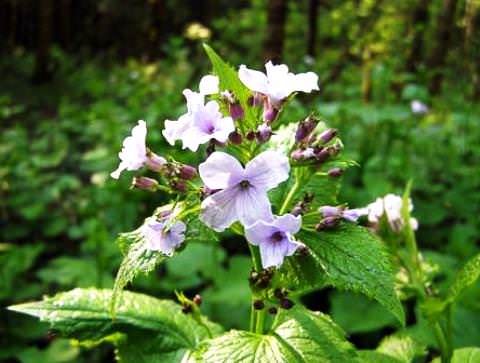

- If a gravel garden is planned, in which the soil is covered with the specified material, the plant will fit perfectly, Lunaria is planted in groups, wormwood, barley, thyme, asters, angelica, tansy, feather grass and other plants can become the closest neighbors. Such a garden is practically free of weeds, and these plants feel great;
- You can actively use it in the design of flower beds or small flower beds. Such compositions are suitable for those who do not come to the site often, since it does not require special care. Surrounded by other unpretentious plants such as bells, daisies and forget-me-nots, the Silver Ruble will be a great addition to the overall composition. It is also possible to use cinquefoil and hydrangeas, lupines, barberries and other plants. It is best to protect such compositions from the wind using special garden supports, or reinforced plastic material;
- A perennial plant will decorate lowland and shaded areas of the site. It is also better to plant it in separate groups, subsequently carrying out periodic weeding and fertilization.
Curious notes about the Kaloniction flower
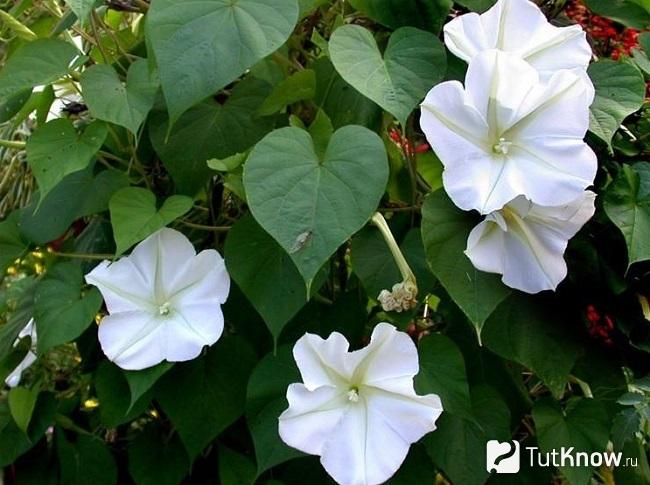

It is customary to grow this plant in the garden because of the enormous size of the flowers, as well as the aroma that fills the garden with the advent of dusk. Since the middle of the 18th century, it was customary for gardeners to decorate palace and city gardens with kaloniktion, since the fragrant aroma spread far around.
In China and Sri Lanka, flat young fruits of the prickly moonflower (Ipomoea turbinata) are usually eaten as a vegetable, and some varieties and morning glories are usually grown as an edible crop and decoration because of the night flowers. From the leaves, Chinese folk healers make infusions and decoctions that relieve stomach pains, and seed material is used to treat injuries.
There is evidence that in the old days, Mesoamerican civilizations used pods, which resembled the fruit of Ipomoea alba, to produce bouncing rubber balls. This aspect, which was known to mankind at least 3000 years ago, was used for the discovery of vulcanization by Charles Goodyear.
Using the lunar after fruiting
In the fall, after flowering, the beautiful Lunnik fruits will adorn any site. If you want to keep them for the winter, you need to cut off the coins along with the shoots and dry them for about two weeks, in a warm and dry room, perhaps in the attic there will be a better place for this.
Such blanks will come in handy in the cold season, to create compositions from Lunnik and other dried flowers. Such compositions are very beautiful in the interior and I will delight you with my original look until spring.
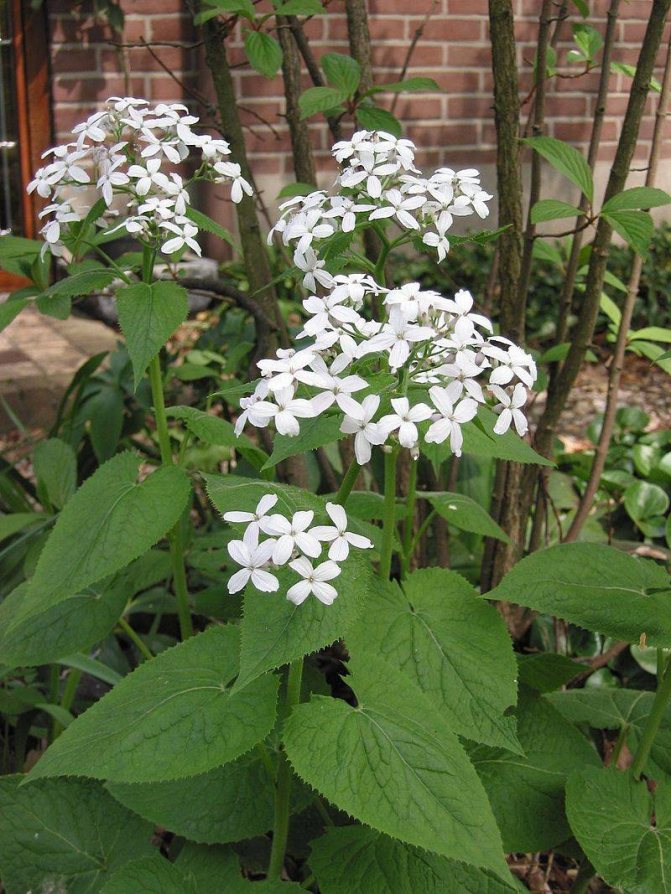

How to plant in open ground


Loading ...
The annual lunar is considered, in fact, a biennial plant, the fact is that in the first year of growth, only the formation of leaves collected in a rosette occurs. The formation of a flowering shoot is observed only in the second year of life. After the seeds ripen, the plant's life cycle comes to an end.
The annual lunar is a light-loving plant, therefore, for planting it, you should choose an open and well-lit area, you can also plant it in light shade. The perennial lunar, on the other hand, cannot be grown in a sunny area; partial shade or shade is more suitable for it. Annual species have no particular soil preferences. But for planting perennial species, only moist, loose soil is suitable, which should be well fertilized; for this, humus is introduced into it (per 1 square meter from 3 to 4 kilograms), as well as lime for digging to a depth of about 0.2 m.
Both types of lunar, which are cultivated by gardeners, can be very easily propagated by cuttings, and also by seeds. Seeds of an annual species can, if desired, be sown directly into open soil at the beginning of spring. In the annual lunar, the color of the seeds is dark brown, and in diameter they reach 0.5-0.6 cm. Sowing should be done in pre-made grooves, while a distance of 0.3-0.35 m must be observed between the seeds, in this case seedlings do not need thinning. The first shoots usually appear after 7 days. In the last days of August, leafy rosettes should already form in the plants, and if desired, they can be transplanted to a new permanent place. If you grow an annual species through seedlings, then its flowering will begin already in the year of planting in open soil. Sowing seeds for seedlings should be done in March, and they should be planted in open soil in the last days of May, but only after return spring frosts are left behind.
Perennial seeds should be sown before winter or in spring time immediately in open soil, for this you need to choose a site located in the shade. If sowing is planned for the spring, then the seeds will need to be stratified by placing them on a refrigerator shelf for vegetables for 6 weeks.The first seedlings will appear only in May, after which they will need to be thinned, keeping a distance between the bushes of at least 0.3 m. By the end of the summer period, the plants will have already developed 2 pairs of true leaf plates. Such a lunar will bloom en masse only in the next season. You also need to be prepared for the fact that in the autumn, starting from the second year of growth, the bushes can give quite abundant self-seeding.
Summarizing
We can say that Lunnik is an extremely unpretentious, and at the same time, an amazing plant. Its fruit, which looks like a full moon or a silver coin, is original and attracts a lot of attention.
And unpretentious care made the plant one of the favorites of numerous landscape designers. And today, despite the fact that Lunnik is listed in the Red Book and in nature it remains very much, he feels great in many, many areas, the owners of which once could not resist the mysterious beauty of this lunar plant.
Lunaria in landscape design
Few gardens can boast of plants that surprise you not so much with flowers as with original fruits. This is because they often forget about such a wonderful representative of the cruciferous family as the lunaria.
The grassy shy girl has several more romantic names: lunar, moon grass and silver ruble. They say that a beautiful twig of the "coin tree" will surely bring happiness and financial well-being. It is difficult to verify whether this is so, but there is no doubt that Lunaria in landscape design looks very unusual and charming.
Lunaria owes such a poetic name to the shape of its flat oval fruit. In early spring, when many plants are still gaining strength, the moon grass already pleases with delicate clouds of fragrant purple or white inflorescences.
After the flowering period, green plates of testes appear, and then the lunar is covered with milk-nacreous "coins", reminiscent of the moon in the night sky. If you rub the fruit with your fingers, the dried-up shell falls off, and the inner translucent plates of the dried flower, which remain in perfect condition for a long time, will decorate the area until deep frost.
Lunaria as a dried flower
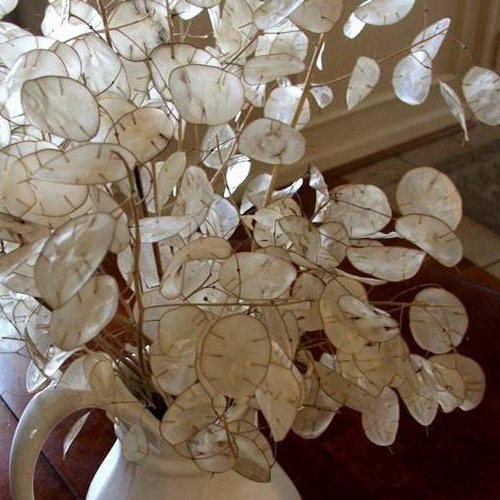

Lunaria dried flowers photo
Dried stalks of a coin-box with seeds are used to create dry bouquets, panels, paintings and other compositions.
An elegant bouquet will last for a long time in a vase. You can add cellosia, amaranth, gelikhrizum, statice, craspedia, volzhanka, gypsophila, stethosis to the lunar.
Main types
Evening primrose flower is very common in Russia in garden plots. This is facilitated by its endurance and unpretentiousness. The plant is capable of blooming in almost any weather conditions, calmly tolerates spring and autumn frosts, and at the same time it is very bright. If you like to spend an evening in the garden with a cup of coffee, then you will witness an amazing spectacle every day. Tightly folded buds open right before our eyes, petals unfold. What happens too slowly with ordinary colors, here you observe as if in accelerated shooting.
So, there are annual species that must be sown every year. They can be of different shades, most often pink and yellow. For example, Drummond, which produces large, bright yellow flowers. But they are not very popular. Most often, evening primrose flower is known as a biennial plant. It can be a multi-colored species, a biennial, whose flowers are reddish-yellow. There is a yellow biennial, its peduncle reaches 25 cm in height, the flower is medium-sized, about 1.5 cm in diameter, but this is compensated by the huge number of flowers on the bush. Evening primrose flower is also perennial, it is, for example, a shrub species. A very large plant that is best planted where it will not interfere with others, and not in the center of the flower bed. Plant height up to one and a half meters, flowers are large, yellow in color.The so-called quadrangular view is also widespread. This is a plant that will delight you with its flowers from May to June, the rest of the time you will have to be content with only high peduncles, up to 45 cm.
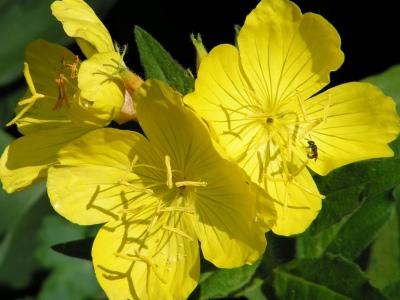

The composition and medicinal properties of the plant
Lunnik reviving in our time is used as an ornamental plant, its therapeutic properties, for the most part, are forgotten. And yet, its ability to heal a number of serious diseases is known among the people, therefore, in a number of regions of Russia, as well as in Belarus and Ukraine, the lunar is gathered by adherents of alternative medicine.
The composition of the plant is poorly understood. Nevertheless, it is known for sure that the largest amount of biologically active substances is contained in seeds. They are oily, because they include a lot of vegetable fats. Among them are the following types of fatty acids:
- Stearic
- Nervonic
- Erukovaya
- Palmitic
- Linoleic
- Oleinovaya
- Eicosenic
Beneficial features
Medicine
Evening primrose is useful: for the purposes of treatment and prevention, you can use oil, seeds and roots. The oil relieves skin inflammation in eczema and allergies, increases vascular tone, lowers cholesterol, prevents blood clots, and improves heart function. For women, evening primrose oil is useful in that it improves well-being on critical days, helps to lose weight and maintain skin elasticity.
Important! Evening primrose oil is contraindicated in glaucoma.
An alternative to oil is crushed plant seeds and can be used for the same symptoms. For prophylaxis, 0.5 tsp per day is enough, and during treatment, you should take 1 tsp 2 or 3 times a day.
For treatment, the roots of biennial and the aerial part of annual species are used; they need to be collected during the flowering period. Infusions from foliage and roots are used for diarrhea, kidney stones, whooping cough, cough, asthma, and it also normalizes the liver, spleen, stomach, accelerates hair growth and has a sedative effect in cardiac muscle neuralgia. Wounds and bruises are also washed with a decoction of the roots.
Cooking
One more thing can be added to the above names - lettuce root, this name was given to the plant for a reason. The strong roots of annual species are rich in vitamin C and are rich in starch, sugars and inulin. Roots dug out in early spring, peeled from the skin, can be cut into salads.


The biennial donkey is distinguished by its edible very thick and fleshy root, popularly called Rapontika or Rapunzel.
Young foliage is also edible, boiled like spinach, and seeds that taste like a nut can be chopped, mixed with jam or honey, and spread on bread. In the recipes, you can find pies with primrose seeds, but it is worth noting that the beneficial properties of seeds evaporate during the baking process.
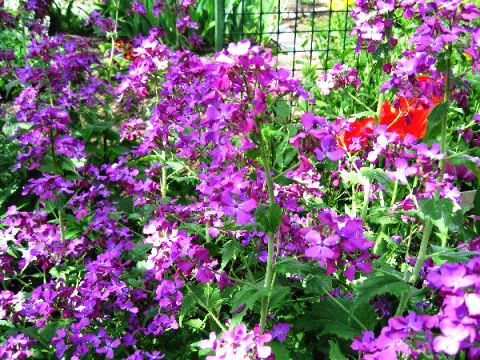

Named the same in all European languages, Lunnik reviving conquers with its dim beauty. Sometimes it is called Penny, or the Silver Ruble, and this name is well deserved. After all, wonderful fruits will not leave anyone indifferent.


Undemanding to care for, beautiful during flowering and fertile season, this flower has long firmly won a place in the hearts of gardeners. And the hunt for it led to the fact that it is listed in the Red Book. What is so unique about the Silver Ruble Lunaria?
The plant has been known for a very long time, growing almost throughout the territory of modern Europe, it has long been used in folk medicine. However, its exact medicinal properties cannot be determined, since no research has been officially conducted on this topic.
What is this plant
Evening primrose flower - or primrose, is one of the brightest representatives of the Cyprian family. There are about 80 species of these plants, so a species may grow on your site that is slightly different in appearance from the one that grows from neighbors.Most often these are annuals, but there are also perennial varieties. These are tall plants, so choose a location where they won't drown out their neighbors. A large flower can be of different shades (yellow, pink), the corolla opens in the evening, only in cloudy weather can it stand blooming during the day.
Description of the lunar flower
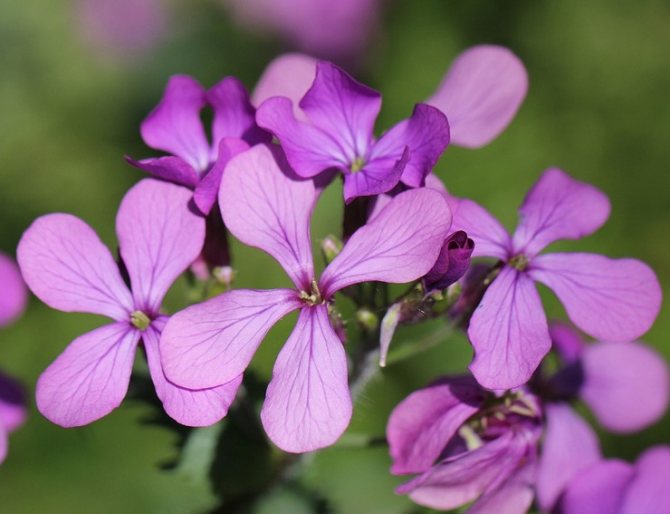

The lunar leaf blades look large and wide, and the petals have long marigolds, painted in a white or purple tone. Smooth, sac-shaped sepals are formed on the stems. Lunnik bears fruit in flattened pods in the form of an ellipsoid or semicircle. The pods are attached to the stalk, the length of which does not exceed 15 mm. In the valves, flat leathery achenes are hidden, located in two rows.
The Legend of the Origin of Lunaria
There is a beautiful legend about the origin of this plant. Allegedly, once, Queen Luna, having seen thousands of flowers on the earth, came down to examine them. They mesmerized her, until the very morning the queen sat, enjoying this unprecedented beauty, inhaling these unforgettable aromas. She fell in love with their enchanting charm.
In the morning, when it was time for the moon to return to her sky, she decided to pick flowers to scatter them all over the sky, next to the stars. Having picked a bouquet, on the way home, she accidentally scattered it, and returned home with nothing. Falling to the ground, those flowers took on an unusual appearance, they became like the moon itself. Since then, mother Luna periodically visits her children, and when she descends from heaven, her creations begin to bloom. People called these flowers Lunarians or Lunarians in honor of the Moon itself.
Types and varieties of lunnik with photo
In botanical sources, only two cultivated species of lunar are mentioned. Let us dwell on each of the types in detail and find out what differences exist between them.
Annual lunar (Lunaria annua)
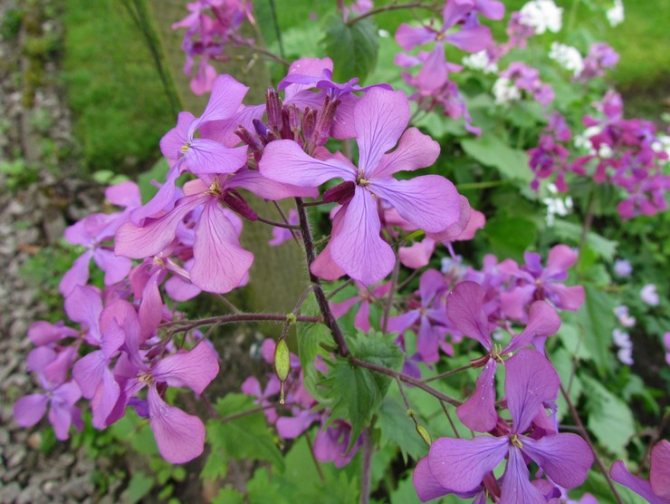

The flower grows in the southern and eastern regions of European countries. This biennial reaches a length of more than half a meter, has wide oval leaf plates with a rough surface. Leaves emerge from the petioles. The color of the flowers is varied - from dark purple to snow-white. Cross-shaped inflorescences are formed from the flowers. Flowering ends with the formation of oblong seed bolls. Lunar pods resemble coins shimmering in the sun. By the beginning of autumn, the seeds ripen. The most popular varieties of the annual lunar are considered to be:
- purple purple;
- white Alba;
- pink variegata;
- lilac fragrant Manstead Pearl.
Lunaria (Lunaria rediviva)
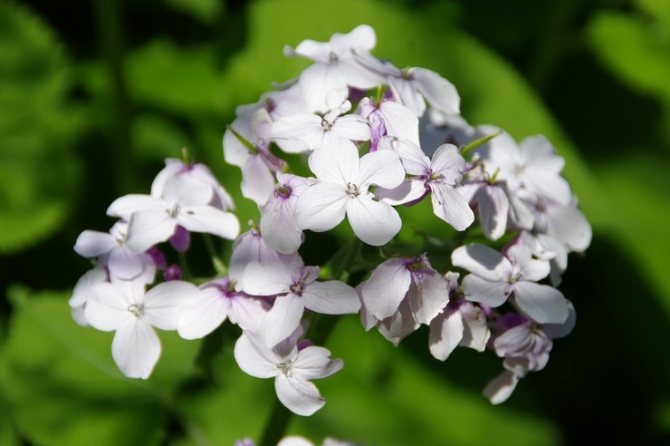

The plant belongs to the perennial forms of the Cruciferous, the distribution area of which is concentrated in the forest belt of the Balkan Peninsula and in the north of European countries. Populations of the species are also found in North America. People knew about the existence of the moon-moon coming to life in ancient times. However, the deterioration of the ecological situation on the planet affects the reproduction of this representative of the flora. Today, in natural conditions, a lunar that comes to life is threatened with complete extinction. The height of the bushes barely reaches one meter. The plant is distinguished by erect stems with a fleecy surface. Closer to the apex, the stems branch out. Two tiers of foliage consist of sessile and opposite leaf blades. Purple paniculate flowers are not devoid of a fragrant aroma.
Garden flowers Perennial flowers Annual and biennial flowers
Most popular varieties
Annual delphinium - field, wild, large-flowered
Bright inflorescences of Lunaria can be seen from afar. Many amateur gardeners distinguish varieties of lunar by color. As already mentioned, there is a white moon, lilac, lilac with pink in more or less bright colors. From the point of view of professional gardening, there is a lunaria:
- Alba;
- Variegata;
- Pearl;
- Manstead Purple.
Alba is a white-flowered plant. This plant variety cannot be confused with Variegata or Purple, etc.varieties.
In Variegata, the inflorescences have a lilac-pink tint. The leaves of the plant are bright green. This makes Variegata stand out among the other varieties of lilac shades of lunar.
The inflorescences of Purple and Mansted Purple are purple, only Purple is distinguished by a more abundant flowering and fragrant aroma.
Growing
The perennial evening primrose flower is an amazing species that should grow in every garden plot. Where else can you find a similar combination, a real beauty, queen of the moonlit night, and unpretentious, like the most common weed. It can grow in the same place for up to 10 years. Moreover, as is not often the case with ornamental plants, every year even more flowers will bloom on it than in the previous one. The choice of place will depend only on your preferences, it can be open sun or partial shade. Even in deep shade, the plant will feel perfectly acceptable.

